 |
| Category: Badges |

|
This
page is a sub category index |
|
|
|
| Hat
badges of Australian Colonial & pre WW1 Units |
|
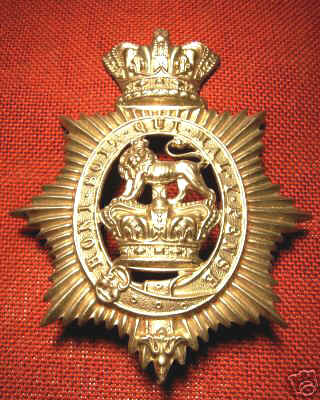
General Service Shako
plate as worn by British, Australian & New Zealand troops towards the
end of the Victorian era.
-
Badges for colonial units were, in
many cases, almost exact copies of British badges. Many of those
that weren't exact were still copied to some degree.
-
Some were adventurous and added an
Australian touch to the design but most stayed with the traditional.
There were three major designs
used.
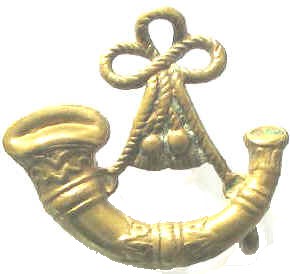
- The Bugle Horn (French Horn) badges
adopted by the British Light Infantry units from the 1770s onwards were
used quite a lot in Australia.
 |
The bugle horn badge
shown left was 1 of several common designs.
It was the badge of the Victorian
Rifles 1906 to 1912.
Before that other variations were used in Victoria
and elsewhere. (Motto translates to
"Death rather than Dishonour") |
|
|
|

Sub category index
|
|

|
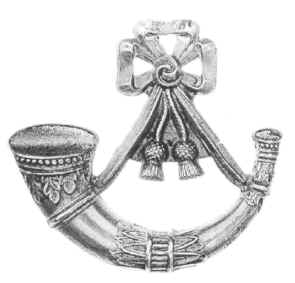
|
| Identical design, smaller
badges were won in some units as collar dogs, especially by
Officers. |
|
1st
NSW Volunteer Rifle Regiment 1854
|

|
The bugle-horn, (in Rifle
Regiment parlance the 'horn'), occupies a place of honour because of its
importance in the Light Division. Movement in extended order could not be
controlled by voice, so it was directed by the officers' and sergeants'
whistles, worn on their cross-belts and by cow-horns carried by buglers
with every company and platoon.
Different calls were
devised to meet those needs, many of which were later adopted by other
units of the British Army. Calls ended on a short, clipped note, which was
the executive for action as in a word of command. Bugle 'calls' are not
referred to as 'calls' but as 'horns'.
|
|
|
- The second
commonly used design was the Cross of St George in a Royal Garter or wreath
and bearing either a 4 or a 5 star Southern Cross.
This to was used in several colonies as can be seen in the 2 examples
below. There were many others.
|
|
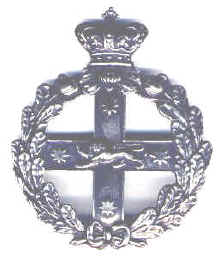
|

|
| The
"Badge of the Colony" of NSW 1880/1890 |
Victorian
Military forces 1884 |
- The
third commonly used base for a badge was the 8 pointed star (and
sometimes the Star of the Most Honourable Order of the Bath. >>>
- This also forms the design for
the "pips" worn by Army Officers.
- These 2 stars, similar but
different, formed the base of many designs right throughout the
Empire.
|
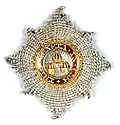 |
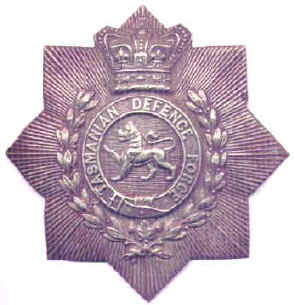 |
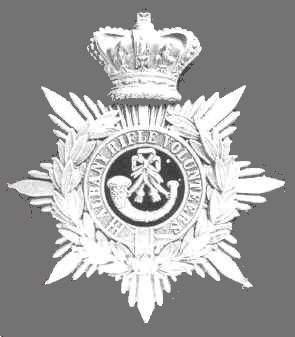 |
|
Tasmanian Defence Force |
Albany Rifle Volunteers
(WA) |
| There were many other
designs and variations as can be seen on the pages that follow but these
were the three most common basic designs. Some (as Tasmanian
Defence Force) combined 2 of the basic designs (Star & garter with a
wreath). Some (as the Albany Rifle Volunteers) combined all 3, star,
garter and bugle horn with a wreath added for good luck. |
|
Crests and Unit
badges of the colonial era |
|

|

|
-
Queensland Mounted
Infantry;
-
Military Forces, New South
Wales;
-
Brisbane Garrison Battery,
Queensland;
-
New Zealand Volunteers;
-
1st Queenslanders, Moreton
Regiment;
-
Victorian Garrison
Artillery;
-
2nd Regiment Queensland;
-
3rd Regiment Townsville,
Queensland.
|
- Victorian
Horse Artillery Brigade;
- Victorian
Rangers;
- Belfast
Garrison Artillery, Victoria;
- Portland
Garrison Artillery, Victoria;
- 2nd
Battalion Infantry Brigade, Victoria;
- Mounted
Rifles, Victoria;
- Port
Fairy Garrison Artillery, Victoria;
- Queensland
Permanent Artillery
|

|